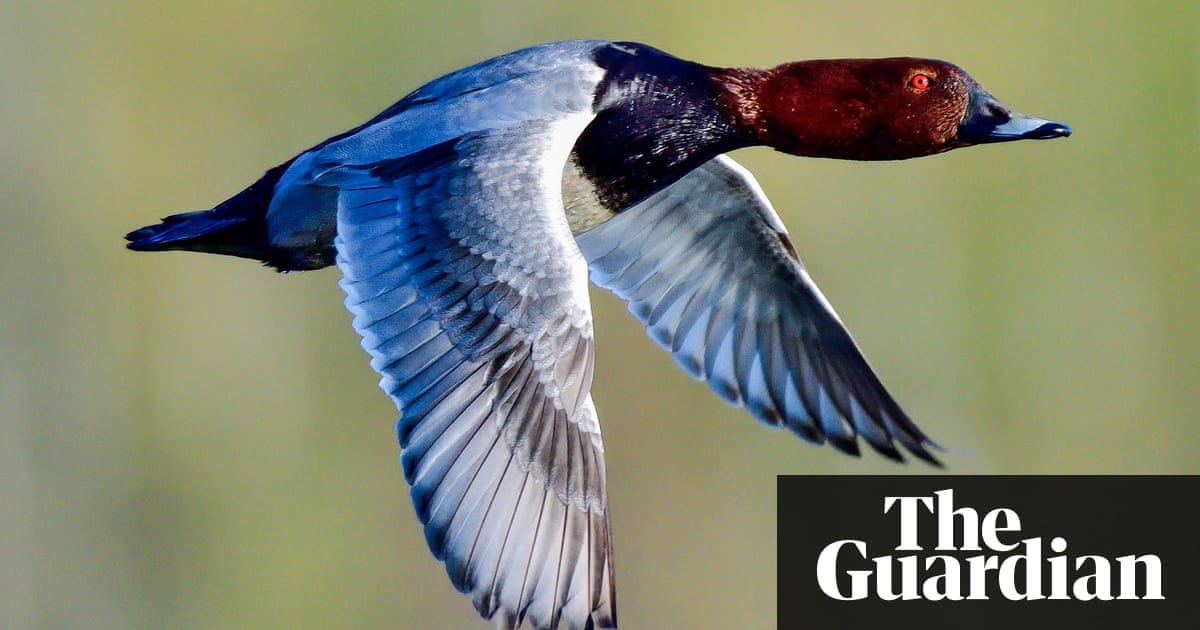
Several rare bird species, including a breed of red-headed duck listed as “vulnerable”, are under threat from lead poisoning linked to shooting, a new report says.
Numbers of common pochard, a duck species at risk of global extinction, have fallen substantially over the past 30 years, a decline partly attributed to the fact that they eat some of the 5,000 tonnes of lead pellets discarded in the countryside by people shooting game, according to the Lead Ammunition Group (LAG).
Other species affected by lead poisoning include the grey partridge, which is also on the RSPB’s “red list” of threatened species, as well as the golden eagle, common buzzard and red kite, the LAG says.
The warning comes in a major new report by the LAG, an expert panel set up by the government in 2010, which says up to 400,000 wildfowl a year may suffer from lead poisoning, causing up to 100,000 deaths. Recent research cited in the report shows that lead can be toxic at lower levels than previously thought.
More than 600,000 people go shooting in the UK each year, part of an industry worth about £2bn. They typically use lead shot to hunt birds, a practice known as wildfowling. The shot scatters when it leaves the gun barrel, and a large proportion falls to the ground. Birds eat the lead shot, mistaking it for the gravel their gizzards need to digest food.
The report says new research shows that birds wounded by lead shot also suffer lead poisoning. By using steel shot instead, shooting-related industries could save up to £16m a year, research indicates.
“Replacing all leaded ammunition, certainly for live quarry shooting, would be more effective, cheaper and more straightforward,” said John Swift, the LAG chairman, who added that Forest Enterprise Scotland had already started to use lead-free ammunition for culling the rapidly growing population of red deer.
“This ensures that a very considerable amount of venison is going on to the market lead-free,” Swift said. “Forest Enterprise Scotland have been using this and found it entirely satisfactory. There are those who say it’s better than lead ammunition.”
Some shooters dislike steel shot as it has a shorter range and can’t be used in antique shotguns, but Swift, a former chief executive of the British Association for Shooting and Conservation (BASC), said that most serious shooters had more than one gun. “There are significant gains to be had from engaging constructively,” he said. “I cannot see why the shooting world is so resistant to change. A lot of people now realise that this is an issue which the shooting world has got out of step on.”
The LAG was set up by Defra and the Food Standards Agency to advise the government on the effects of lead on wildlife. It reported in 2015 that about 10,000 children grew up in households eating game killed with lead ammunition, putting them at risk of brain damage. But LAG members from organisations that support shooting resigned before the report was released, saying it was not based on sound scientific evidence.
The government responded to the report by slipping out an announcement by the then environment secretary, Liz Truss, on the day that Theresa May entered Downing Street, saying that the report “did not show that the impacts of lead ammunition were significant enough to justify changing current policy”.
Since then there have been significant moves outside the UK to ban lead ammunition. The European Chemicals Agency is consulting on plans to phase out lead ammunition across all wetland habitats in the EU, with a decision by the European commision due next year.
The Wildfowl and Wetlands Trust’s head of communications, Peter Morris, welcomed the report, saying it showed there was “great global consensus and political momentum to stop poisoning wildlife.
He added: “We’d love the UK to catch up with that international enthusiasm to clean up the countryside and parts of the shooting industry are already embracing that ambition. Lead ammunition was somehow dragged into pro- and anti-shooting debates, with some on both sides mistaking its phasing-out as a potential thin end of a wedge for the sport. But ironically, going lead-free would be a win-win. It would lead to healthier live wild birds and healthier game meat too.”
BASC spokesman Garry Doolan disputed the new LAG report, saying that it was acting “in an entirely lobbying capacity”.
“The UK has acted to protect vulnerable species by legislating on the use of lead shot for wildfowl and over wetlands,” he said. “There are existing lead shot regulations in the UK, specifically designed to protect the species mentioned.”
He added that recent estimates showed that the common pochard population in the UK had more than doubled in 2017, although over the last 25 years numbers have falled by 67%.
from Environment | The Guardian https://ift.tt/2xf6iG3
via IFTTT

No comments:
Post a Comment